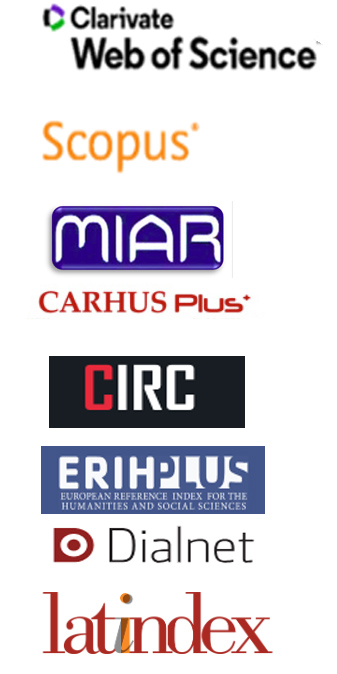Art Expertization, Appraisal and Valuation. Conservation Issues in the Spanish Contemporary Art Market
Resumo
The need to apply conservation-restoration criteria in museums, heritage and public collections has been widely studied in previous publications. However, the functions of the conservator-restorer in the face of the problems of the Spanish Contemporary Art Market have hardly been addressed in scientific literature. This research is based on two objectives: firstly, to investigate how the specific technical and artistic knowledge of the conservator-restorer covers a need in the ecosystem of the Contemporary Art Market by means of expert reports, appraisal and valuation. Secondly, to analyze how these specific skills and knowledge are transferred through Higher Education programs. Based on a comparative study, the specific problems of the Spanish Art Market shall be mapped, and protocols proposed that are respectful of conservation-restoration criteria and transferable through university programs to the future contemporary art stakeholders.
Downloads
Referências
ADOM. ASOCIACIÓN PARA LA DEFENSA DE LA OBRA DE JOAN MIRÓ. https://www.successiomiro.com/es/autenticacion [consulta: 7/7/2021]
BERNÁRDEZ SANCHÍS, C. (2016). “Historia del arte contemporáneo y materialidad”. En La Historia del Arte en España: devenir, discursos y propuestas, Molina Martín, A., (coord.). Madrid: Polifemo, 219-271.
BRUQUETAS GALÁN, R. (2002). Técnicas y Materiales de la pintura Española en los siglos de oro. Madrid: Fundación de apoyo al arte hispánico.
CASAMARTINA I PARASSOLS, J. (2004). “Dos obras de Torres-García, destruidas por un coleccionista”. El País, 1 de noviembre de 2004.
DELGADO TERCERO, L. (2019) El peritaje de obras de arte. Valencia: Tirant Lo Blanch.
DURAN, E. & AMOR-GARCIA, R. L. & SORIANO, P. (2017). New insights for creative art processes. Collaboration and experimentation with contemporary artists. Ge-Conservacion, 11, 257-263. https://doi.org/10.37558/gec.v11i0.502
FERNANDO DURÁN SUBASTAS (2021). Arte Contemporáneo. 23 de junio de 2021. https://www.fernandoduran.com/es/subastas/arte-contemporaneo-2021-junio/
GASPAR COLL I ROSELL (coord.).(2005). Libro Blanco del Título de Grado en Historia del Arte. ANECA. http://www.aneca.es/var/media/150276/libroblanco_harte_def.pdf [consulta 5/05/2021]
HERMENS, E.; FISKE, T. (2007). Art, conservation and Authenticities. Material, Concept, Context. Archetype Publications.
HUMMELEN, I; SILLÉ, D. (eds.) (2005) Modern Art: Who Cares? An interdisciplinary research project and international symposium on the conservation of modern and contemporary art. London: Archetype Publications.
HERMENS, E. ROBERTSON, F. (eds). (2016). Authenticity in Transition: Changing Practices in Contemporary Art Making and Conservation. London: Archetype Publications.
KIRSH, A. LEVENSON, R. (2000). Seeing Through Paintings. Physical Examination in Art Historical Studies. New Haven and London: Yale University Press.
LEVENSON, S.R. (2004). The Expert Versus the Object: Judging Fakes and False attributions in the Visual Arts. Ed. Spencer, R. Oxford University Press.
LLAMAS-PACHECO, R. (2017). Intención artística, conservación y mutación en la obra de arte actual: una aproximación hermenéutica. Ge-Conservacion, 12, 45-54. https://doi.org/10.37558/gec.v12i0.348
MANRESA, A. (2002). “Un juez autoriza a Miquel Barceló a destruir 19 cuadros falsos” en El País, 11/02/2002. https://elpais.com/diario/2002/02/12/cultura/1013468404_850215.html [consulta: 28/7/2021]
MARTÍNEZ PÉREZ, A; DE WILLERMIN, R. (2012). “Entrevista a Richard de Willermin” Ars Magazine. Abril-Junio, pp. XX-XX. En línea: https://arsmagazine.com/producto/entrevista-richard-de-willermin-el-metodo-es-ojo-y-experiencia-nada-mas/ [consulta 6/5/2021]
MCANDREW, C. (2021). Informe The Art Market 2021. Art Basel and UBS.
MCANDREW, C.(2017). Informe El mercado español del arte en 2017. Cuadernos arte y mecenazgo. Fundación Bancaria “la Caixa”.
MUSEO CENTRO DEL ARTE REINA SOFIA. s.f. Nota de Prensa. La tertulia del café de Pombo: proceso de investigación y restauración. https://tinyurl.com/stbzzvy2
REAL DECRETO LEGISLATIVO 1/1996, de 12 de abril BOE núm. 97, de 22/04/1996. BOE núm. 97, de 22/04/1996. BOE-A-1996-8930.
SCHÄDLER-SAUB, U; WEYER, A. (eds.). (2010). Theory and Practice in the Conservation of Modern and Contemporary Art. Reflections on the Roots and the Perspectives. London: Archetype Publications.
SOTHEBY’S (2018). Sothebys gests banksyed at contemporary art auction in London. https://tinyurl.com/5639eb7t [consulta: 6/8/2021]
SHEPS, H. (2014). “Burning Fake Chagall’s, Market Integrity versus Ownership Rights – A Zero Sum Game”. Centre for Law Art website. https://tinyurl.com/3rvbsncw [consulta: 20/8/2021]
WHITE, C. (2015). The Rembrandt Research Project and its denouement. The Burlington Magazine, Vol. 157 Nº 1343. https://www.burlington.org.uk/archive/editorial/the-rembrandt-research-project-and-its-denouement
ZERNER, H. (1987). “Points of view on connoisseurship at the end of the twentieth century”, Drawing 9.
Os autores conservam os direitos de autor e de propriedade intelectual e garantem à revista Ge-Conservación o direito de edição e publicação do trabalho, sob a Creative Commons Attribution License. Este permite a partilha do trabalho, por outros, com o reconhecimento da autoria do trabalho e da publicação inicial nesta revista.
Os artigos podem ser utilizados para fins científicos e formativos, mas nunca com fins comerciais, expressamente, sancionados por Lei.
A informação existente nos artigos é da exclusiva responsabilidade dos autores.
A revista Ge-Conservación e os autores podem estabelecer, em separado, acordos adicionais para a distribuição não exclusiva da versão da obra publicada na revista (por exemplo, colocá-la num repositório institucional ou publicá-la em livro), com o reconhecimento da sua publicação inicial nesta revista.
É permitido e incentivado aos autores difundirem os seus trabalhos, electronicamente (por exemplo, em repositórios institucionais ou no seu próprio site) depois da sua publicação na revista Ge-Conservación, já que pode dar lugar a intercâmbios produtivos, assim como a citações mais amplas e mais cedo dos trabalhos publicados pelo autor.
Os dados pessoais fornecidos pelos autores são utilizados, unicamente, para os fins da revista e não serão proporcionados a terceiros.









